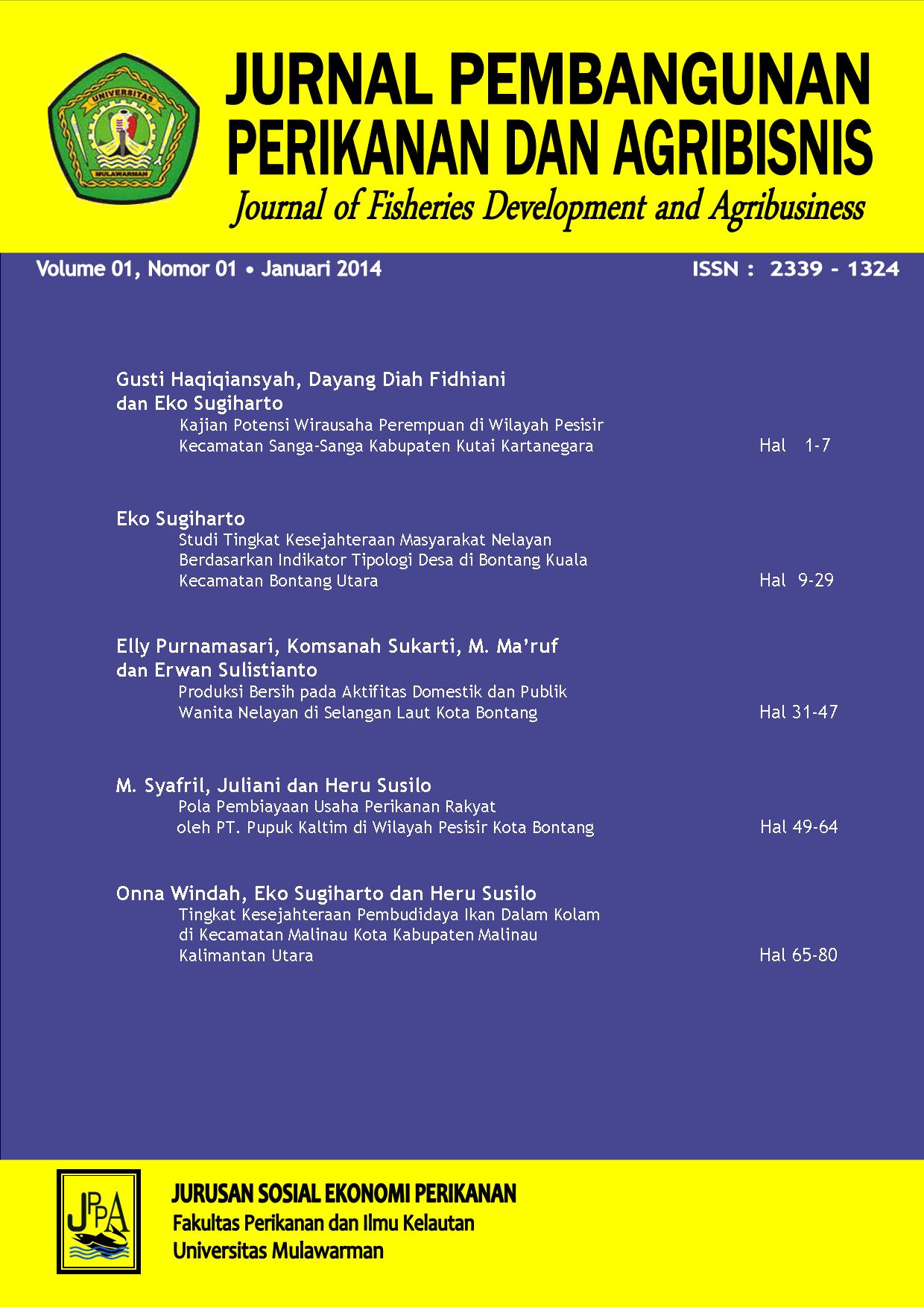Study on Fisher’s Community Welfare based on Village Typology Indicators in Bontang Kuala Bontang Utara Sub-district
DOI:
https://doi.org/10.30872/jppa.v1i1.190Keywords:
fisher’s community, welfare, village typology indicators, poverty, Bontang KualaAbstract
This research was aimed to determine the social profile of the fisher’s community in Bontang Kuala Village related to poverty and welfare based on the typology of the village. The research was carried out by direct monitoring in the field. The results showed that the Bontang Kuala Village community members are mostly fishers. The majority people who live there are from middle-income level group. The income of fisher’s community in Bontang Kuala was IDR 207,000,000 per household per year. Based on the classification system the village type was determined as E1, A2, L2, Pd3, GR3, Y2, P3, with a value of 16. As number of fishers was larger than any other jobs, the fisher’s community was categorized as primer group (E1). In addition, the village had a high output of IDR 100,000,000 per year (Y2) and the community modernity of the village was classified as transision (A2). The government agency led to a modest degree of change to a higher level with 4-6 institutions (L2) and the education level was high (Pd3). Furthermore, the community was in the process and mutual assistance (GR3) and the level and direction of development of the village was determined as moderate (P3).
Downloads
References
Akhdiyat, M. 1996. Analisis Kontribusi Hutan terhadap Pendapatan Masyarakat Desa Sekitarnya. Fakultas Kehutanan. Universitas Mulawarman. Samarinda.
Badan Pusat Statistik, 2006. Bontang dalam Angka 2006. BPS Kota Bontang.
Hadi, 1987. Metode Purposive Sampling. Jakarta.
Kusnadi, 2002. Konflik Sosial Nelayan. LkiS. Yogyakarta.
Downloads
Published
Issue
Section
License
Copyright (c) 2014 Jurnal Pembangunan Perikanan dan Agribisnis

This work is licensed under a Creative Commons Attribution-ShareAlike 4.0 International License.







